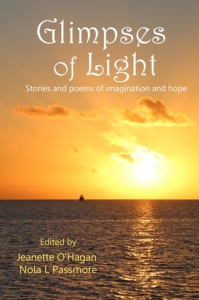 Today I have the pleasure of introducing debut author, Susanne Timpani. Susanne is married, has four beautiful children and works as a community nurse with families. (So, she’s a busy lady!) Themes of her work and her faith appear in her writing. She’s also the author of the blog, 10 Minute Daily Retreat, twice weekly reflections on scripture. And she’s kindly agreed to chat about her new novel, Twice Stolen:
Today I have the pleasure of introducing debut author, Susanne Timpani. Susanne is married, has four beautiful children and works as a community nurse with families. (So, she’s a busy lady!) Themes of her work and her faith appear in her writing. She’s also the author of the blog, 10 Minute Daily Retreat, twice weekly reflections on scripture. And she’s kindly agreed to chat about her new novel, Twice Stolen:
‘After the death of his grandmother, Dimitri finds he’s been lied to most of his life. His journey into the Outback to unravel the mystery of his identity leads to an encounter with Leah, a nurse with a tragic secret.’
Twice Stolen broaches issues of identity, loss, love and betrayal, and is woven around the theme of Australia’s Indigenous Stolen Generation. You can find out more on this aspect of the novel in Susanne’s interview yesterday on the CWD blog.
Whilst prompting deeper reflection on the generational impact of the policy effecting widespread removal of Indigenous children from their families, this novel also emulates the traditional storytelling of Indigenous Australians, entwining the Biblical Song of Songs (Song of Solomon) through this element. In Q&A format, Susanne’s going to tell us a little more about this aspect of her story.
Q. What sparked the idea of incorporating the Biblical Song of Songs as a framework for your novel?
A. The Song is considered by some as one of the greatest love songs in history. Its fame in the ancient world parallels our Romeo and Juliet or Pride and Prejudice. Given that Twice stolen is written in the genre of Inspirational Fiction, I decided its themes provided a strong foundation on which to build the plot.
Q. Twice Stolen draws on the emotional awakenings depicted in Song of Songs. How is this significant in the novel?
A. The Song of Songs is like any love story. The characters experience an ebb and flow of emotion in their relationship. They face obstacles and resolutions appear almost impossible. The reader wonders if the characters’ love is strong enough to endure.
Q. The young adult protagonists both carry vulnerabilities because of their situations. Do you feel there are similarities between your characters and the lovers in Song of Songs?
A. My characters, Dimitri and Leah, like to think so.
Q. Okay, I think Dimitri and Leah might be a little biased. 🙂 What do you think?
A. Absolutely. The Song of Songs describes the love between King Solomon, named the ‘Lover’, and a local girl, the ‘Beloved’. The Beloved finds it difficult to comprehend how a king could possibly love her, a mere keeper of a vineyard. Despite returning his feelings, she spends a great proportion of the Song denying them and rejecting his love. The Lover never wavers in his feelings, believing that in the end she’ll come around.
Q. This makes it sound like Dimitri’s love is not reciprocated as ardently by Leah. Is it really so one sided?
A. Not at all. The Song of Songs is thought to appear in the Bible because it reflects the relationship of love which exists between God and ourselves. God is our steadfast Lover, and we, His recalcitrant Beloved. It doesn’t take Leah and Dimitri too long to realize that they are both similar to the Beloved, and in the end, God alone is the true Lover.
Q. Lastly, is there a verse from Song of Songs you feel best captures the heart of this story?
A. Definitely.
for love is as strong as death,
its jealousy[a] unyielding as the grave.
It burns like blazing fire,
like a mighty flame.[b]
7 Many waters cannot quench love;
rivers cannot sweep it away. Song of Songs 8:6-7
Throughout the hurdles Dimitri and Leah must face in Twice Stolen, they constantly question the strength of their love. They each face a major life challenge and something innate must change within or their romance doesn’t stand a chance. They question whether it is even possible to have love as strong as this verse describes.
Thanks so much for sharing with us today, Susanne. I enjoyed reading Twice Stolen and found myself drawn by Dimitri’s and Leah’s stories – as I’m sure your future readers will, too. Twice Stolen won the 2012 CALEB prize for an unpublished manuscript and is due for release on Valentine’s Day weekend (Feb 12-14) in South Australia, and will be launched in the company of Susanne’s publisher, Anne Hamilton, founder and director of Armour Books. For more about Susanne visit her website and 10 Minute Daily Retreat. To connect you can also find her on Facebook and Goodreads.
 Saturday I received copies of my new novel Activate hot off the press and had the pleasure of sharing it with attendees at the Omega Writers Book Fair 2016. Technically its release date is Nov 1, 2016, but with next week (Sept 11-17) being Disability Action Week 2016 in Queensland, I can’t think of more perfect timing.
Saturday I received copies of my new novel Activate hot off the press and had the pleasure of sharing it with attendees at the Omega Writers Book Fair 2016. Technically its release date is Nov 1, 2016, but with next week (Sept 11-17) being Disability Action Week 2016 in Queensland, I can’t think of more perfect timing. As a parent I often find myself saying, ‘Ensure you’re being inclusive.’ In reality this has to be a purposeful decision and is largely influenced by the type of disability present. For example, if someone is mobility impaired, accessibility to venues, terrain and physical requirements of an event or activity need to be well considered. Some disabilities are not obvious, and might involve environmental or emotional triggers. Often a lot of little things are overlooked by well meaning people for sheer lack of awareness. (As I have done myself, at times.)
As a parent I often find myself saying, ‘Ensure you’re being inclusive.’ In reality this has to be a purposeful decision and is largely influenced by the type of disability present. For example, if someone is mobility impaired, accessibility to venues, terrain and physical requirements of an event or activity need to be well considered. Some disabilities are not obvious, and might involve environmental or emotional triggers. Often a lot of little things are overlooked by well meaning people for sheer lack of awareness. (As I have done myself, at times.)

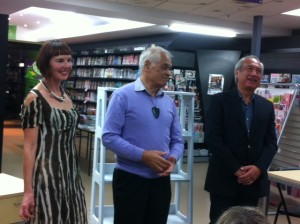 So here was the reason God had arranged for me, a Pakeha girl married into a Maori family, to write it. A purely Maori perspective might stir up resentment and anger, slashing open old wounds with no remedy or hope of reconciliation. A purely Pakeha perspective might defend itself with stories of less than honorable actions of some Maori. (I remember hiding every lunchtime for a year in the school toilets terrified of the big Maori girls who bullied me. A few years later when we moved to the mostly Maori part of town behind the pub, they would offer me cigarettes on the school bus and I knew I was ‘okay’!)
So here was the reason God had arranged for me, a Pakeha girl married into a Maori family, to write it. A purely Maori perspective might stir up resentment and anger, slashing open old wounds with no remedy or hope of reconciliation. A purely Pakeha perspective might defend itself with stories of less than honorable actions of some Maori. (I remember hiding every lunchtime for a year in the school toilets terrified of the big Maori girls who bullied me. A few years later when we moved to the mostly Maori part of town behind the pub, they would offer me cigarettes on the school bus and I knew I was ‘okay’!) I stared at the screen of our main PC and watched the hard drive icon disappear. It couldn’t be good by anyone’s description – and even worse as an author in the last stages of editing a manuscript.
I stared at the screen of our main PC and watched the hard drive icon disappear. It couldn’t be good by anyone’s description – and even worse as an author in the last stages of editing a manuscript.

